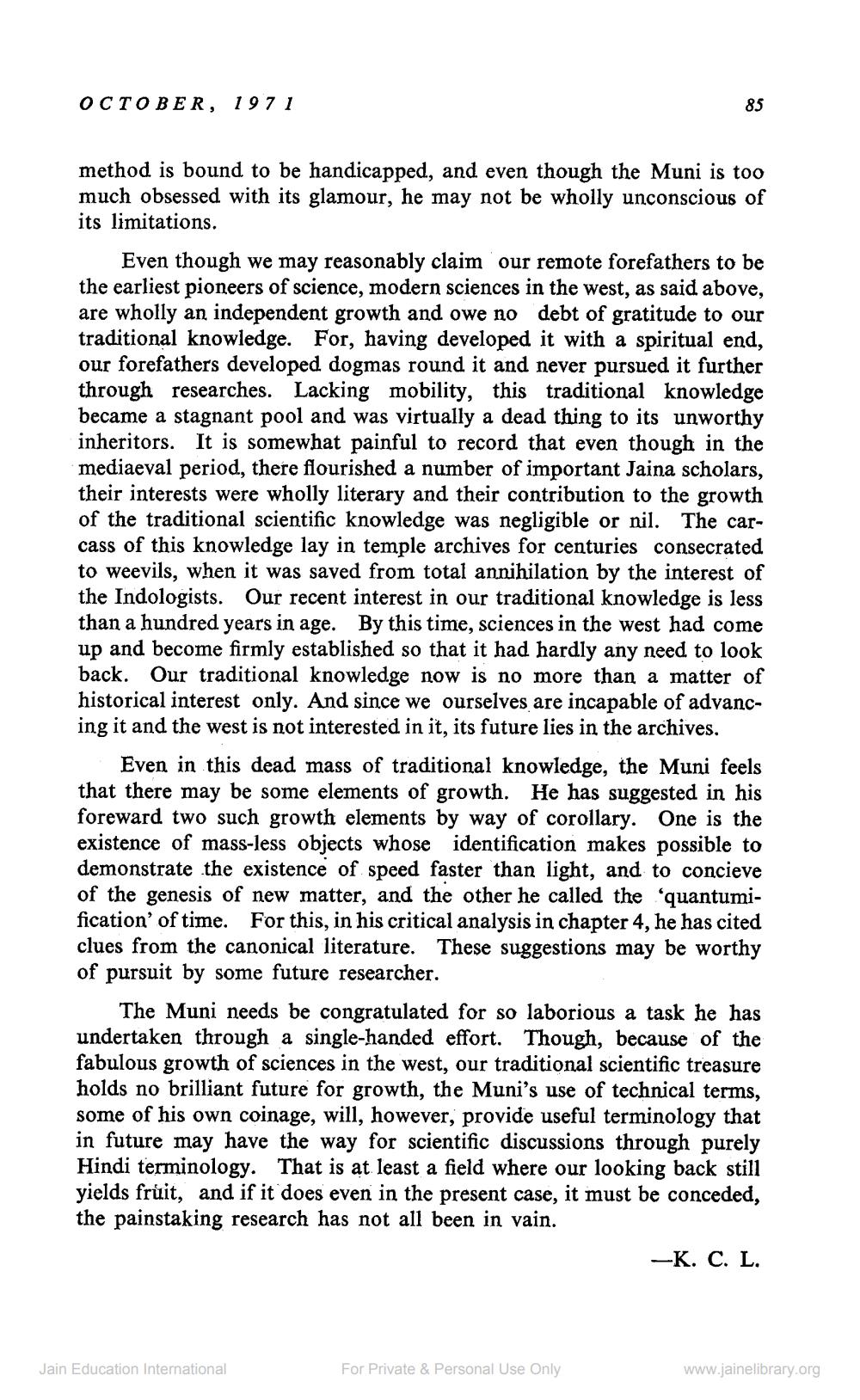________________
OCTOBER, 1971
method is bound to be handicapped, and even though the Muni is too much obsessed with its glamour, he may not be wholly unconscious of its limitations.
85
Even though we may reasonably claim our remote forefathers to be the earliest pioneers of science, modern sciences in the west, as said above, are wholly an independent growth and owe no debt of gratitude to our traditional knowledge. For, having developed it with a spiritual end, our forefathers developed dogmas round it and never pursued it further through researches. Lacking mobility, this traditional knowledge became a stagnant pool and was virtually a dead thing to its unworthy inheritors. It is somewhat painful to record that even though in the mediaeval period, there flourished a number of important Jaina scholars, their interests were wholly literary and their contribution to the growth of the traditional scientific knowledge was negligible or nil. The carcass of this knowledge lay in temple archives for centuries consecrated to weevils, when it was saved from total annihilation by the interest of the Indologists. Our recent interest in our traditional knowledge is less than a hundred years in age. By this time, sciences in the west had come up and become firmly established so that it had hardly any need to look back. Our traditional knowledge now is no more than a matter of historical interest only. And since we ourselves are incapable of advancing it and the west is not interested in it, its future lies in the archives.
Even in this dead mass of traditional knowledge, the Muni feels that there may be some elements of growth. He has suggested in his foreward two such growth elements by way of corollary. One is the existence of mass-less objects whose identification makes possible to demonstrate the existence of speed faster than light, and to concieve of the genesis of new matter, and the other he called the 'quantumification' of time. For this, in his critical analysis in chapter 4, he has cited clues from the canonical literature. These suggestions may be worthy of pursuit by some future researcher.
The Muni needs be congratulated for so laborious a task he has undertaken through a single-handed effort. Though, because of the fabulous growth of sciences in the west, our traditional scientific treasure holds no brilliant future for growth, the Muni's use of technical terms, some of his own coinage, will, however, provide useful terminology that in future may have the way for scientific discussions through purely Hindi terminology. That is at least a field where our looking back still yields fruit, and if it does even in the present case, it must be conceded, the painstaking research has not all been in vain.
Jain Education International
For Private & Personal Use Only
-K. C. L.
www.jainelibrary.org




